Vermont, located in the northeastern region of the United States, is a state known for its stunning natural beauty, charming small towns, and vibrant culture. With its picturesque countryside, towering mountains, and bustling urban centers, Vermont offers a distinctive blend of nature and culture. To help visitors and residents navigate this beautiful state, we have created a detailed map of Vermont with cities and highways.
This map highlights Vermont’s major cities, including Burlington, Montpelier, Rutland, and Brattleboro, as well as its primary highways and roads. Whether you’re planning a road trip or simply want to explore Vermont’s unique landscape and culture, this map is an essential tool. So, grab your map and get ready to discover all that Vermont has to offer, from its world-renowned maple syrup to its historic landmarks and everything in between.
Printable Vermont Map With Cities and Highways
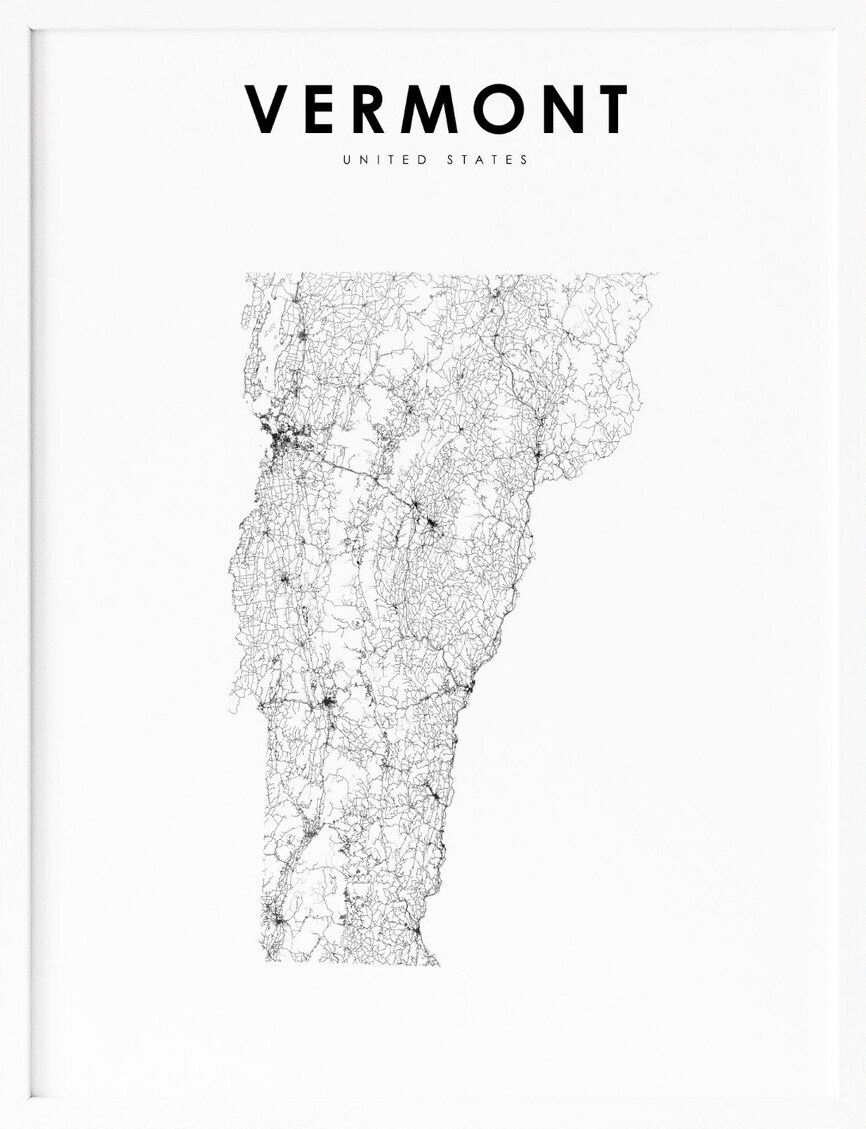
Cities
Burlington
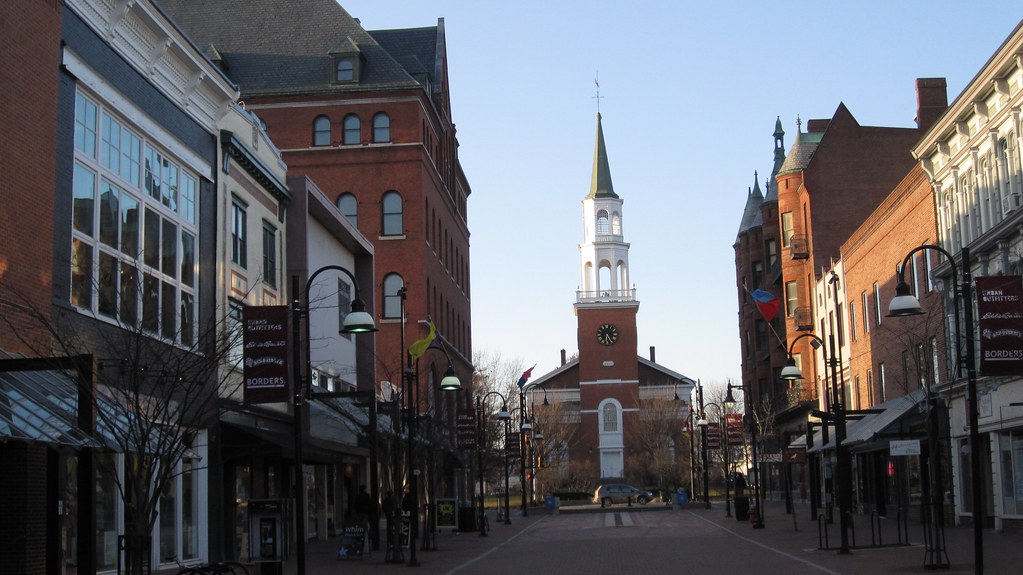
Burlington is the most populous city in Vermont and serves as the seat of Chittenden County. Located 45 miles (72 km) south of the Canada-United States border and 95 miles (153 km) south of Montreal, the city has a strategic location. As of the 2020 U.S. census, the population was 44,743, making it the least populous city in the 50 U.S. states to be the most populous city in its state.
Burlington is a regional college town, home to the University of Vermont (UVM) and Champlain College. The city also boasts Vermont’s largest hospital, the UVM Medical Center, and the Patrick Leahy Burlington International Airport, which is owned by the City of Burlington and located in neighboring South Burlington.
In 2015, Burlington became the first city in the U.S. to run entirely on renewable energy, showcasing its commitment to sustainability. With its vibrant neighborhoods and amenities, Burlington is consistently ranked among the best places to live in Vermont.
Essex
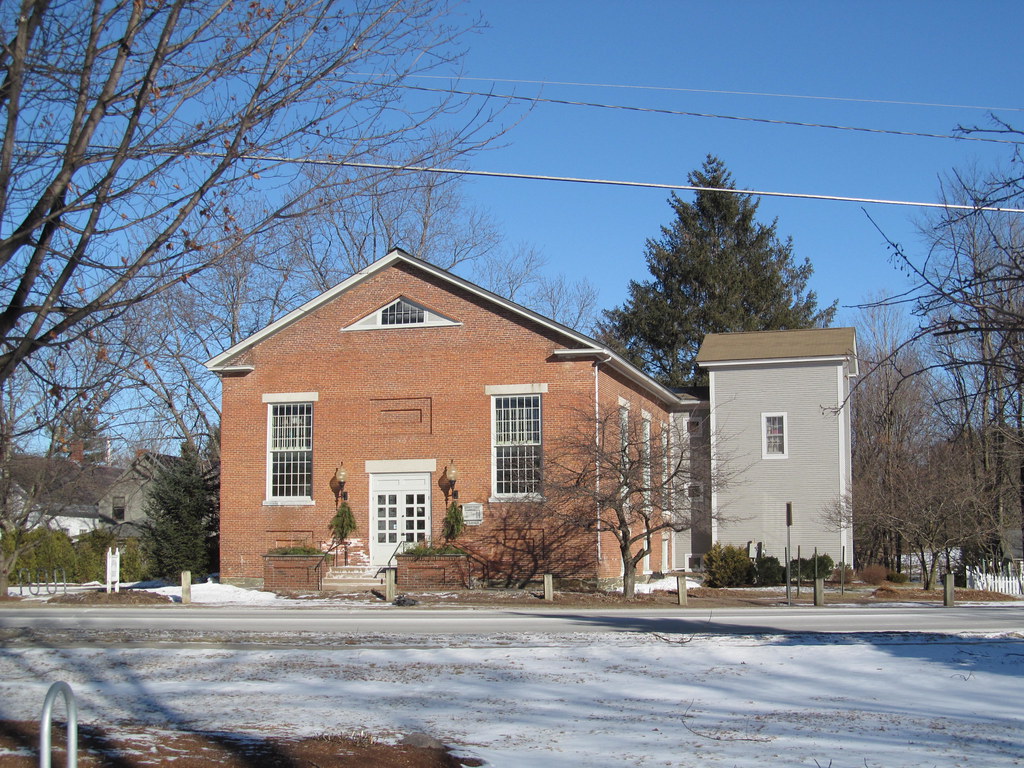
Essex is a town located in Chittenden County, Vermont, United States. Vermont Route 289 runs through the town from east to west, providing easy access to neighboring communities. The city of Essex Junction, with a population of 10,590 as of 2020, was previously located within the town as an incorporated village until 2022.
The village was known for its exciting community and amenities, including shopping centers, restaurants, and parks. With its convenient location and access to nearby cities, Essex and Essex Junction have become popular residential areas for those seeking a balance between small-town living and urban amenities.
The town has a rich history and is home to several historic sites, including the 1792 Old Brick Church, which is listed on the National Register of Historic Places.
South Burlington

South Burlington is a vibrant city located in Chittenden County, Vermont, United States. Along with neighboring Burlington, it is a principal city of the Burlington metropolitan area. As of the 2020 U.S. census, the population was 20,292.
The city is known for its thriving business community, with several major companies headquartered there, including Ben & Jerry’s, the famous ice cream company, and the state of Vermont’s largest mall, the University Mall. The mall is a popular shopping destination for both locals and visitors, offering a wide range of retail stores, restaurants, and entertainment options.
South Burlington is also home to several parks and recreational areas, including Red Rocks Park, which offers stunning views of Lake Champlain and the Adirondack Mountains. With its strong economy and attractive amenities, South Burlington is a desirable place to live, work, and visit in Vermont.
Colchester

Colchester is a town located in Chittenden County, Vermont, United States. As of the 2020 census, the population of Colchester was 17,524, making it the third-most populous municipality and most populous town in the state of Vermont. The town borders Burlington, Vermont’s most populous municipality, and is located directly to Burlington’s north on the eastern shore of Lake Champlain, with stunning views of the Adirondack Mountains to the west.
Colchester is home to several notable institutions, including Saint Michael’s College and the Vermont campus of Southern New Hampshire University. The Vermont National Guard is also based in the town.
With its scenic location and access to nearby amenities, Colchester has become a popular residential area for those seeking a balance between small-town living and urban amenities. The town boasts several parks and recreational areas, including the Colchester Causeway, a popular trail that runs along the lake and offers sweeping views of the water and mountains.
Rutland city
Rutland is the only city in Vermont and serves as the seat of the county of the same name in the United States. As of the 2020 census, the city had a total population of 15,807. Located approximately 65 miles (105 km) north of the Massachusetts state line, 35 miles (56 km) west of the New Hampshire state line, and 20 miles (32 km) east of the New York state line, Rutland is a hub for transportation and commerce in the region.
It is the third-largest city in Vermont after Burlington and South Burlington. Rutland City is completely surrounded by Rutland Town, which is a separate municipality. The downtown area of the city is listed as a historic district on the National Register of Historic Places, showcasing its rich history and cultural heritage.
With its pleasing community and amenities, Rutland is a popular destination for visitors and a desirable place to live for those seeking a balance between small-town living and urban amenities.
Bennington
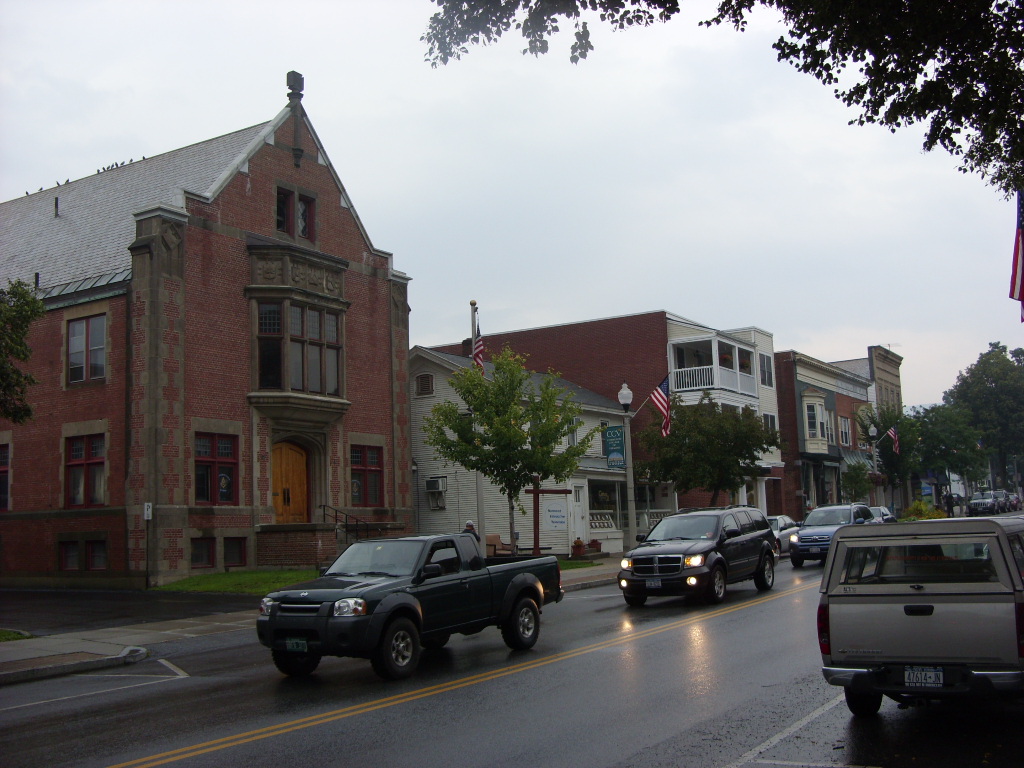
Bennington is a town located in Bennington County, Vermont, United States. It is one of two shire towns (county seats) of the county, the other being Manchester. As of the 2020 US Census, the population was 15,333, making it the most populous town in southern Vermont, the second-largest town in Vermont (after Colchester), and the sixth-largest municipality in the state, including the cities of Burlington, Rutland, and South Burlington.
The town is known for its rich history and cultural heritage and is home to the Bennington Battle Monument, which is the tallest human-made structure in the state of Vermont.
Bennington has a long history of manufacturing, primarily within wood processing, and is recognized nationally for its pottery, iron, and textiles. With its scenic location and access to nearby amenities, Bennington has become a popular residential area for those seeking a balance between small-town living and urban amenities.
Brattleboro

Brattleboro, originally known as Brattleborough, is a town located in Windham County, Vermont, United States. It is situated about 10 miles (16 km) north of the Massachusetts state line at the confluence of Vermont’s West River and Connecticut. With a 2022 Census population of 12,106, it is the most populous municipality abutting Vermont’s eastern border with New Hampshire, which is the Connecticut River.
Brattleboro is home to several notable institutions, including satellite campuses of the Community College of Vermont and Vermont Technical College. The town is also home to the New England Center for Circus Arts and the Vermont Jazz Center, which attract visitors and performers from around the world. The Brattleboro Retreat, a mental health and addictions hospital, is also located in the town.
In 2023, Brattleboro was ranked first in the nation in the “strongest towns” contest run by the nonprofit Strong Towns, showcasing its strong community and commitment to sustainability. With its vibrant arts and culture scene, amenities, and scenic location, Brattleboro is a popular destination for visitors and a desirable place to live for those seeking a balance between small-town charm and urban amenities.
Essex Junction

Essex Junction is a city located in Chittenden County, Vermont, United States. As of the 2020 U.S. census, the population was 10,590. The city was incorporated as a village on November 15, 1892, and became Vermont’s 10th city on July 1, 2022. Essex Junction is a transportation hub, with Amtrak providing daily service via its station in Essex Junction, one of two rail stations in Chittenden County.
The Vermonter train runs daily from St. Albans in northern Vermont to Union Station in Washington, D.C., passing through Essex Junction. The city is also home to the GlobalFoundries’ Burlington Design Center and 200 mm wafer fabrication plant, which is the largest private employer in the state of Vermont, with approximately 3,000 employees.
Essex Junction is part of the Essex Westford Unified Union School District, which operates K-12 schools including Essex High School. The city is surrounded on three sides by the Town of Essex (“Essex Town”), which provides additional amenities and services for residents. With its strategic location, strong economy, and access to transportation and education, Essex Junction is a desirable place to live and work in Vermont.
Hartford
Hartford is a town located in Windsor County, Vermont, United States. It is situated on the New Hampshire border, at the intersection of Interstates 89 and 91, making it a hub for transportation and commerce in the region. The town is known for the confluence of the White and Connecticut Rivers, as well as the Ottauquechee River, which flows through the town.
Hartford is composed of five unincorporated villages: Hartford, Quechee, West Hartford, White River Junction, and Wilder. As of the 2020 census, the population was 10,686, making it a bustling community with a variety of amenities and services.
The town is home to several notable institutions, including the VA Medical Center, Dartmouth-Hitchcock Medical Center, and the Montshire Museum of Science. With its scenic location, access to transportation, and strong economy, Hartford has become a popular residential area for those seeking small-town charm combined with urban modernity.
Milton
Milton is a town located in Chittenden County, Vermont, United States. As of the 2020 census, the population was 10,723, making it a thriving community with a variety of amenities and services. According to local legend, the town was named for the English poet John Milton, but the name most likely originated from William FitzWilliam, 4th Earl FitzWilliam, who held the title Viscount Milton and was a supporter of independence for the colonies during the American Revolution.
Milton has a strong sense of community, with a municipal building, school system, library, police force, fire department, rescue squad, several churches, as well as civic and social organizations.
The town is also home to several parks and recreational areas, including the Arrowhead Mountain Lake, which offers boating, fishing, and swimming opportunities. With its strong community and amenities, Milton is a desirable place to live and work in Vermont.
Williston

Williston is a town located in Chittenden County, Vermont, United States. Originally rural and laid out with many farms, in recent decades it has developed into a thriving suburb of Burlington, the largest city in the state of Vermont. As of the 2020 census, the population of Williston was 10,103, an increase of over 1,000 people since the 2010 census.
Williston is one of the fastest-growing towns in Vermont, and while becoming more populated, it has also developed as a major retail center for the Burlington area as well as much of central and northern Vermont. The town is home to several notable institutions, including the Vermont National Guard, the Catamount Outdoor Family Center, and the Champlain Valley Exposition, which hosts a variety of events and festivals throughout the year.
Williston has a National Register Historic District in its unincorporated central village, showcasing its rich history and cultural heritage. With its strong economy, amenities, and access to nearby attractions, Williston is a great destination for visitors and a fulfilling place to live.
Middlebury

Middlebury is the shire town (county seat) of Addison County, Vermont, United States. As of the 2020 census, the population was 9,152, making it a small but vibrant community in Vermont. Middlebury is known for its rich cultural heritage and institutions, including Middlebury College, one of the top liberal arts colleges in the country.
The town is also home to the Henry Sheldon Museum of Vermont History, which showcases the region’s history and cultural heritage. Middlebury has a charming downtown area with a variety of shops, restaurants, and cultural attractions, including the Town Hall Theater, which hosts a variety of performances and events throughout the year.
The town is surrounded by beautiful natural scenery, including the Green Mountains and the nearby Lake Champlain. With its strong community and access to education and culture, Middlebury is a marvelous place to live and work in Vermont.
Springfield

Springfield is a town located in Windsor County, Vermont, United States. As of the 2020 census, the population was 9,062, making it a small but vibrant community in Vermont. Springfield is known for its rich history and cultural heritage, with several notable institutions and landmarks, including the Eureka Schoolhouse, the Hartness House Inn, and the Springfield Art and Historical Society.
The town is also home to several parks and recreational areas, including the North Springfield Lake, which offers boating, fishing, and swimming opportunities. In recent years, Springfield has undergone a revitalization, with new businesses and community initiatives aimed at promoting economic growth and community development. With its strong community and amenities, Springfield is a desirable local destination.
Barre city
Barre, also known as “Barre City,” is the most populous city in Washington County, Vermont, United States. As of the 2020 census, the municipal population was 8,491. The city is almost completely surrounded by “Barre Town,” which is a separate municipality. Barre is often twinned with the nearby Vermont state capital of Montpelier in local media and businesses.
It is the main city in the Barre-Montpelier micropolitan area, which has nearly 60,000 residents and is Vermont’s third-largest metropolitan area after those of Burlington and Rutland. Barre is also Vermont’s fifth-largest city, with a prosperous economy and a variety of amenities and services.
The city is known for its rich history in granite quarrying and manufacturing, with several notable landmarks and institutions dedicated to the industry. With its strong community and access to nearby attractions, Barre is waiting for visitors with open arms.
Winooski

Winooski is a city located in Chittenden County, Vermont, United States. Located on the Winooski River, it is the most densely populated municipality in northern New England, an area comprising the states of Maine, New Hampshire, and Vermont. As of the 2020 U.S. census, the municipal population was 7,997, making it a bustling community with a variety of amenities and services.
Despite being the smallest of Vermont’s 10 cities by area, Winooski is a vivacious and diverse city, with a strong sense of community and culture. As part of the Burlington, Vermont metropolitan area, it is bordered by Burlington, Colchester, and South Burlington, providing access to a variety of nearby attractions.
The city is known for its thriving downtown area, with a variety of shops, restaurants, and cultural attractions, including the Winooski Block, which features a variety of retail and office spaces. With its strong economy, amenities, and access to nearby attractions, Winooski is a desirable place to live and work in Vermont.
Montpelier

Montpelier is the capital of the U.S. state of Vermont and the county seat of Washington County. As of the 2020 census, the population was 8,074, making it the least populous state capital in the United States. However, the daytime population grows to about 21,000, due to the large number of jobs within city limits.
The city is home to the Vermont College of Fine Arts, which offers a variety of programs in the arts and humanities. Montpelier was named after Montpellier, a city in the south of France, reflecting the widespread Francophilia in the area during the Revolutionary War.
The city has a rich history, with a variety of landmarks and institutions dedicated to its cultural heritage. The state government contributes to the city’s economy, which also relies on insurance and tourism. With its bustling downtown area, access to nearby attractions, and rich cultural heritage, Montpelier is a satisfying area to visit in Vermont.
Barre town
Barre Town is a town located in Washington County, Vermont, United States. As of the 2020 census, the population was 7,923, making it the third-largest municipality in Washington County and the 16th-largest municipality in Vermont. Popularly referred to as “Barre Town,” the town of Barre almost completely surrounds “Barre City,” which is a separate municipality.
The original town, now known as Barre, was first chartered in 1780 as the Town of Wildersburgh. In 1793, the name Wildersburgh was unpopular with the inhabitants, and the name of the town was changed to Barre. In 1895, the City of Barre was incorporated and separated from the town of Barre, and both continue to exist as separate municipalities.
Barre Town is known for its scenic beauty and outdoor recreation opportunities, including a number of parks and trails. With its strong community and access to nearby amenities and attractions, Barre Town is a desirable place to live and work in Vermont.
Shelburne

Shelburne is a town located in Chittenden County, Vermont, United States. The town is situated along the shores of Lake Champlain, and its town center lies approximately 7 miles (11 km) south of the city center of Burlington, the largest city in the state of Vermont. As of the 2020 census, the population of Shelburne was 7,717, with the main settlement of Shelburne in the center of town being a census-designated place (CDP), with a population of 6,178.
The municipality has the highest median income in both Chittenden County and the Burlington metropolitan area, reflecting the town’s prosperous economy and strong community. Shelburne is known for its scenic beauty and outdoor recreation areas, including several parks, trails, and beaches along Lake Champlain.
The town is also home to several notable institutions and landmarks, including the Shelburne Museum, a museum of art and Americana, and the Vermont Teddy Bear Company, a popular manufacturer of teddy bears.
St. Johnsbury

St. Johnsbury, also known as “St. J,” is the shire town (county seat) of Caledonia County, Vermont, United States. As of the 2020 census, the population was 7,364. The town is situated on the Passumpsic River and is located approximately six miles northwest of the Connecticut River and 48 miles (77 km) south of the Canada-U.S. border.
St. Johnsbury is the largest town by population in the Northeast Kingdom of Vermont and has long served as a commercial center for the region. In 2006, the town was named “Best Small Town” in National Geographic Adventure’s “Where to Live and Play” feature. The southern one-third of the town is more densely settled and is defined by the U.S. Census Bureau as the St. Johnsbury census-designated place, where over 81% of the population resides.
St. Johnsbury is known for its rich history, with several notable landmarks and institutions dedicated to its cultural heritage, including the St. Johnsbury Athenaeum, a library and art gallery, and the Fairbanks Museum and Planetarium, a museum of natural history and science. With its welcoming locals and supportive infrastructure, St. Johnsbury is a brilliant area to settle down in.
St. Albans Town

St. Albans is a town located in Franklin County, Vermont, United States. Commonly abbreviated as St. Albans, the town completely surrounds St. Albans City, which is a separate municipality. As of the 2020 census, the population of St. Albans town was 6,988. The town is known for its natural beauty, with several parks and trails offering opportunities for outdoor recreation.
St. Albans town is also home to several notable institutions and landmarks, including the St. Albans Historical Museum, which showcases the town’s rich history, and the St. Albans Bay Park, a popular destination for swimming, boating, and fishing. With its strong community, amenities, and access to nearby attractions, St. Albans town is a desirable place to live and work in Vermont.
St. Albans City
St. Albans City is the only city in and the seat of Franklin County, Vermont, United States. At the 2020 census, the city’s population was 6,877. The city is completely surrounded by St. Albans Town, which is a separate municipality. St. Albans City is located in Northwestern Vermont, 29 miles north of Burlington, Vermont’s most populous city, which is located in Chittenden County.
The city is known for its vibrant downtown area, with several restaurants, shops, and cultural institutions, including the St. Albans Museum and the Vermont Maple Festival, which celebrates the state’s famous maple syrup. St. Albans City is also home to several parks and trails, offering opportunities for exciting outdoor pursuits.
Swanton Town

Swanton is a town located in Franklin County, Vermont, United States. As of the 2020 census, the population of Swanton was 6,701. The town includes the village of Swanton, which is known for its charming downtown area and historical landmarks. Swanton is situated along the Missisquoi River and offers several parks and trails for outdoor recreation, including the Missisquoi Valley Rail Trail, a popular destination for hiking, biking, and cross-country skiing.
The town is also home to several notable institutions and landmarks, including the Swanton Historical Society Museum, which showcases the town’s rich history, and the Missisquoi National Wildlife Refuge, a protected area for wildlife and outdoor enthusiasts. With its strong community, amenities, and access to nearby attractions, Swanton is a rewarding local destination.
Northfield

Northfield is a town located in Washington County, Vermont, United States. The town lies in a valley within the Green Mountains and has been home to Norwich University since 1866. Norwich University is the oldest private military college in the United States and is a major employer in the town.
The town contains the village of Northfield, where over half of the population lives. As of the 2020 census, the town’s total population was 5,918. Northfield is known for its scenic beauty, with a number of parks and trails, including the Northfield Falls Covered Bridge, a popular destination for sightseeing and photography.
The town is also home to several notable institutions and landmarks, including the Vermont State Police Academy, the Northfield Historical Society, and the Northfield Savings Bank. With its welcoming community, amenities, and access to cultural delights, Northfield is a brilliant spot to live and work.
Morristown
Morristown is a town located in Lamoille County, Vermont, United States. As of the 2020 census, the population of Morristown was 5,434. The town is the largest by population in Lamoille County, and its central village of Morrisville serves as the county’s main commercial center.
Morrisville is known for its thriving downtown area, with several restaurants, shops, and cultural institutions, including the Morrisville Historical Society and the River Arts Center, which hosts art exhibits, performances, and workshops.
The town is also home to several parks and trails, offering opportunities for outdoor recreation, including the Lamoille Valley Rail Trail, a popular destination for hiking, biking, and snowmobiling. With its strong community, amenities, and access to nearby attractions, Morristown is a desirable place to live and work in Vermont.
Lyndon
Lyndon is a town located in Caledonia County, Vermont, United States. As of the 2020 census, the population of Lyndon was 5,491. The town is home to Lyndon State College, a public liberal arts college that offers a range of undergraduate and graduate programs. Lyndon contains five unincorporated villages, including Lyndonville, Lyndon Corner, Lyndon Center, Little Egypt, and East Lyndon.
Lyndon is the second-most populous town in the Northeast Kingdom, with only neighboring St. Johnsbury being larger. It is also the fastest-growing town in Vermont with a population over 5,000, growing 9.8% in the decade preceding the 2010 census.
Lyndon is known for its natural landscapes, with several parks and trails offering outdoor pursuits, including the Lyndon Outing Club, which offers skiing, snowboarding, and other winter sports. With friendly locals, a great infrastructure, and plenty of local attractions, Lyndon is full of delights.
Interstates
Interstate 89
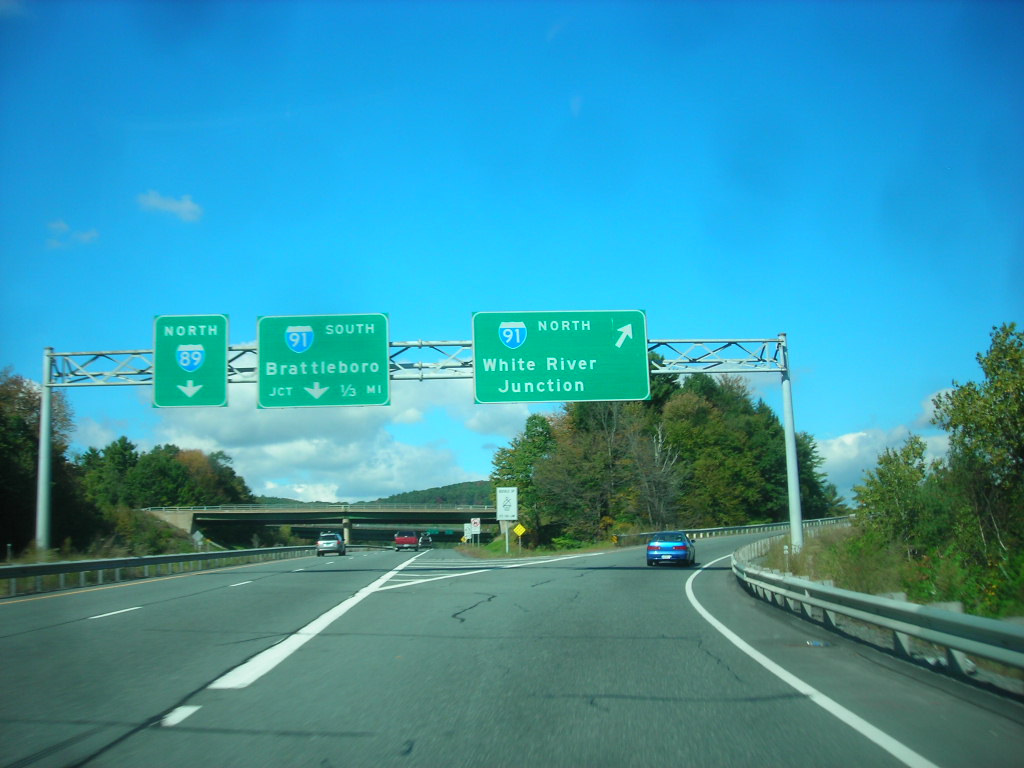
Interstate 89 (I-89) is one of Vermont’s most important roads, as it is the only Interstate Highway to directly serve Vermont’s capital city, Montpelier, and its largest city, Burlington. The highway also passes through other important cities and towns, including Barre, Waterbury, and St. Albans. Williston, which has become Burlington’s big-box retail center and one of the fastest-growing towns in the state, also has an interchange along I-89.
The highway starts by crossing the Connecticut River into Vermont and continues in a northwesterly direction, passing through the scenic rolling hills of Vermont and the high country of central Vermont. I-89’s path then parallels the Winooski River and US 2, cutting through the section of the Appalachian Mountains known as the Green Mountains, and is surrounded by peaks of over 4,000 feet.
The highway then leaves the Green Mountains to enter the Champlain Valley, and a notable shift in the landscape is visible. Here, just outside Burlington, the highway turns northward once again and passes through Milton, Georgia, St. Albans, Swanton, and finally the border town of Highgate Springs, where it ends at the Canada–United States border at the Highgate Springs–St. Armand/Philipsburg Border Crossing.
Interstate 91

Interstate 91 (I-91) traverses the entire length of Vermont and serves as a major transportation corridor for eastern Vermont and western New Hampshire. The length of I-91 within Vermont is 177 miles and has two lanes in each direction the entire way from the Massachusetts state line to the Canada–United States border.
The highway’s rural character and long distances between exits in Vermont are in stark contrast to its south, where exits are more frequent and the road carries four lanes of traffic in each direction at some points.
The major control cities in Vermont are Brattleboro, White River Junction, St. Johnsbury, and Newport. I-91 enters Vermont in the town of Guilford and heads north to travel through various communities, including Dummerston, Putney, Westminster, North Westminster, Bellows Falls, Springfield, Weathersfield, Windsor, Hartland, North Hartland, and White River Junction.
From there, it continues toward St. Johnsbury, passing through Wilder and Norwich, Orange County, Thetford, Fairlee, Bradford, Newbury, and Wells River. The highway then proceeds through the Northeast Kingdom region and the town of Lyndon, before finally reaching the Canada–United States border at Derby Line.
Highways
Route 2

U.S. Route 2 (US 2) is a part of the United States Numbered Highway System that is split into two segments. In Vermont, US 2 extends 150.518 miles from the New York state line in Alburgh to the New Hampshire state line in Guildhall, passing through the cities of Burlington and Montpelier as it traverses the state.
The highway parallels Interstate 89 (I-89) between these two cities. Although the portion of the road from Alburgh to Burlington follows a north–south alignment, US 2 is continuously signed east (heading south during this portion) and west (heading north) to match its overall alignment, making it the longest east–west signed route in the state.
The Burlington to Montpelier route was first laid out as a toll road in the early 19th century and was later incorporated into the transcontinental auto trail known as the Theodore Roosevelt International Highway in 1919 before being designated as part of US 2 in 1926. At a nearly 460-mile overall length, US 2 is also the longest highway of any designation (Interstate, U.S. Route, or state highway) that enters the state of Vermont.
Route 4
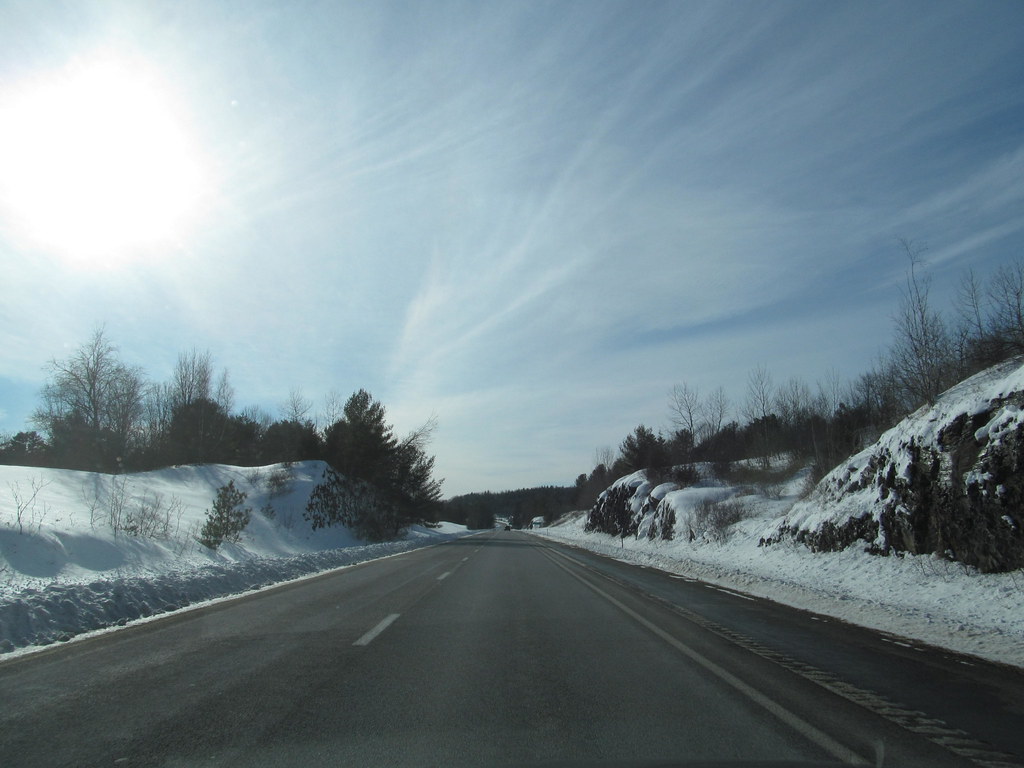
U.S. Route 4 (US 4) in the U.S. state of Vermont extends for 66.059 miles between the New York state line at Fair Haven and the New Hampshire state line at White River Junction. As one of the main arteries between New York and New Hampshire, US 4 is an important route for both commuters and travelers.
The highway passes through several towns and cities, including Rutland, Killington, Woodstock, and Quechee, providing access to a variety of tourist attractions and outdoor recreational activities.
The section of US 4 between Rutland and Woodstock is particularly scenic, passing through the Green Mountains and offering stunning views of the surrounding countryside. Along the way, travelers can stop at historic sites, museums, and charming small towns, making US 4 a popular route for both locals and visitors to Vermont.
Route 5
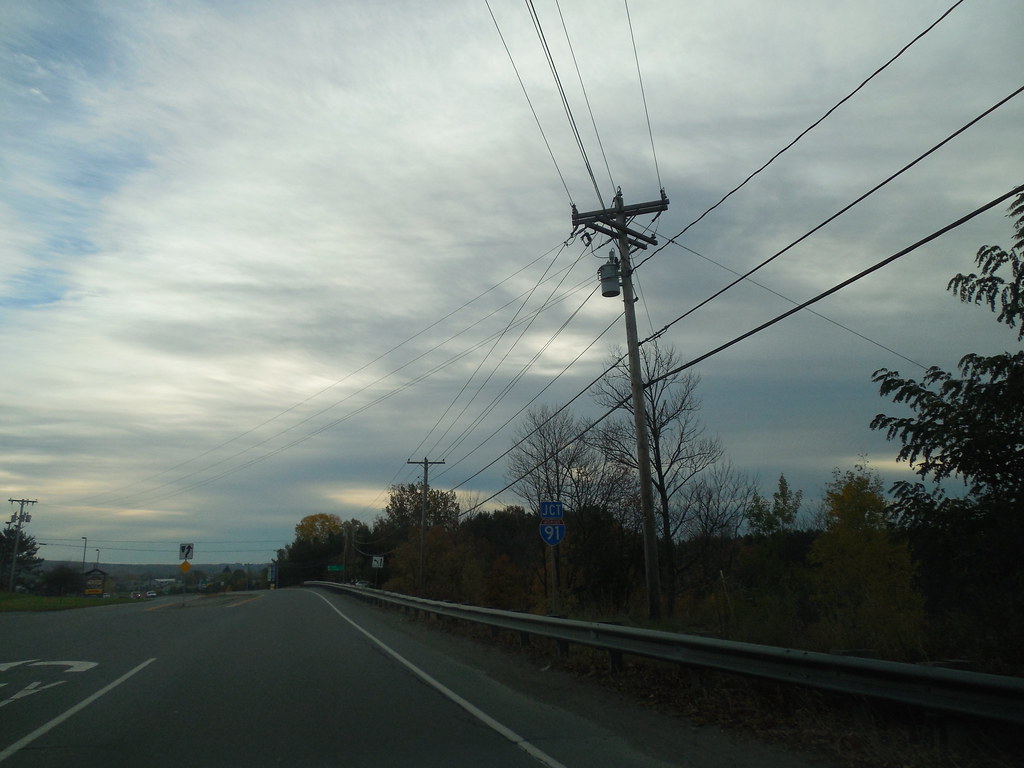
US 5 follows the Connecticut River valley from the southern border of Vermont, traveling along the west bank of that river until it reaches St. Johnsbury. The highway enters Vermont at Guilford and passes through five counties: Windham, Windsor, Orange, Caledonia, and Orleans.
US 5 continues northward, following the Passumpsic River valley until it reaches Sheffield Heights, where it crosses the heights and follows the Barton River valley until it reaches Orleans. From there, it turns north-northwest and crosses the divide near the Airport Road in Irasburg, following the Black River valley into Newport.
The highway ends at the Canada–United States border in the village of Derby Line, where it continues into Canada as Route 143. With a total of 22 junctions over its 192-mile length in the state, US 5 has many interchanges with I-91, providing easy access to various towns and attractions along the way.
Route 7

U.S. Route 7 (US 7) is a north–south highway that extends from southern Connecticut to the northernmost part of Vermont. In Vermont, the route covers 176 miles along the western side of the state as a mostly two-lane rural road, with the exception of an expressway section between Bennington and East Dorset.
The highway is known as the Ethan Allen Highway for its entire length through the state, named after the US Revolutionary War general. US 7 passes through several towns and cities, including Bennington, Manchester, Rutland, Middlebury, and Burlington, providing access to various tourist attractions and outdoor recreational activities.
The highway ends at an interchange with Interstate 89 (I-89) in the town of Highgate, just south of the Canada–United States border. I-89 continues to the border crossing, making US 7 an important route for both local and long-distance travel in Vermont.
Route 302

US 302, also known as the William Scott Memorial Highway, begins as River Street in the southeastern part of Montpelier, the state capital, at a junction with US 2. The highway heads southeastward up the valley of the Stevens Branch of the Winooski River, passing through the northeastern corner of the town of Berlin and entering Barre, where it becomes North Main Street.
In the center of Barre, US 302 becomes Washington Street at the junction with Vermont Route 14 South and continues southeastward up the valley of the Jail Branch River. The highway climbs into the hills of eastern Vermont, passing through the rural town of Orange, where it crosses a height of land and the valley of the Waits River, a tributary of the Connecticut River.
US 302 turns northeastward, passing through a corner of Topsham, crosses another height of land, and enters the valley of the Wells River in the rural town of Groton. The highway turns southeastward again, following the Wells River and passing through the village of South Ryegate, before intersecting Interstate 91 in the northern part of the town of Newbury.
US 302 continues east and enters the village of Wells River, where it crosses US 5 and reaches the Connecticut River and the New Hampshire border. US 302 was part of the Theodore Roosevelt International Highway in Vermont, making it an important route for both local and long-distance travel.

